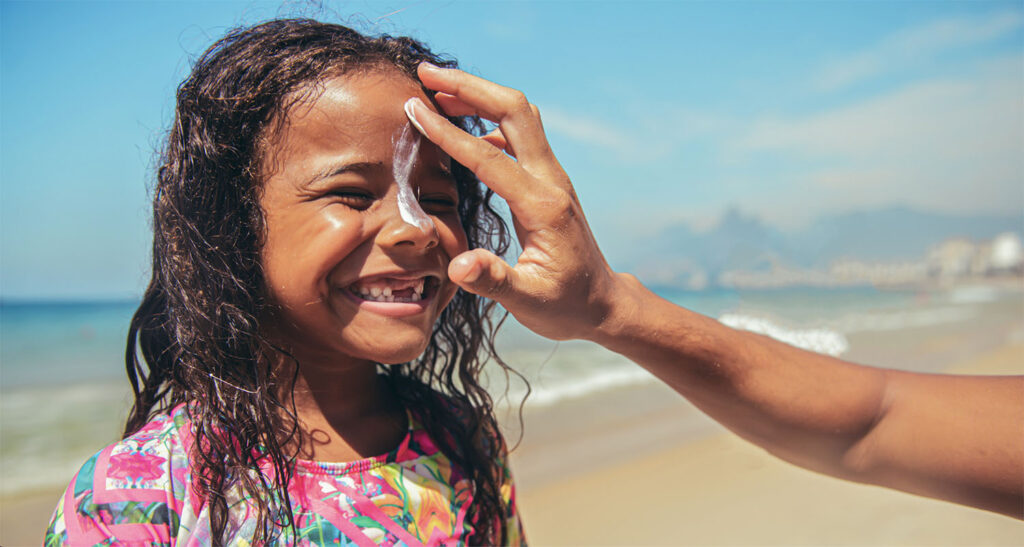By Sofia Roberson, Alliance Intern from Reed College ‘25
Sunshine, swimming, and…sunburns? I was reminded of this after several days at my hometown beach in Florida. I own several kinds of sunscreen, from non-scented to acne-preventing to sport — but resisted applying them because of their troubling ingredients. Please always apply sunscreen to protect your skin from cancer-causing UV rays! I wanted to apply mine, but felt too guilty because I realized all my sunscreens contained toxic chemicals that harm marine wildlife and threaten human health, as you will see.
I was shocked to find that up to 14,000 tons of sunscreen are released into waterways each year, according to the American Chemical Society. In addition, it really bothers me that most sunscreens are packaged in plastic. This gives me a lot of anxiety because it never goes away and too often ends up contributing to ocean plastic pollution. Fortunately for us (and the earth!), many people share my concerns and companies have created a plethora of sustainable sunscreen options.
Not all Sunscreens are Created Equal
There are two kinds of sunscreens: chemical and mineral. The difference between the two is that chemical sunscreens work to change the chemical structure of UV rays in order to deactivate their damaging effects on the skin. Mineral sunscreens provide a physical barrier between your skin and the sun’s UV rays. Unfortunately, these are not the only differences. Chemical sunscreens have been found to be disproportionately harmful to humans, fish and wildlife, in comparison to mineral options, due to a few ingredients commonly found in chemical formulas.
Avoid Sunscreens with Oxybenzone and Octinoxate to Protect Yourself and Our Reefs
Oxybenzone and octinoxate (octyl methoxycinnamate) are two of the most common and concerning ingredients in chemical sunscreens. They work by absorbing UV rays and transforming them into heat energy. These chemicals are readily absorbed through the skin into the body, and can lead to harmful effects such as endocrine disruption and reproductive dysfunction, says the Environmental Working Group. The National Health and Nutrition Examination Survey discovered oxybenzone is in 96.8% of urine samples taken following sunscreen application. The FDA found octinoxate in human blood samples at 16 times above the safety threshold.
Similar harmful results have been found in marine wildlife. Numerous lab studies done on fish have found that exposure to oxybenzone increases stress, mortality rates, and disrupts reproductive functioning. One of the more concerning effects on marine ecosystems is oxybenzone’s impact on zooxanthellae, algae that live on organisms such as coral. Zooxanthellae help the organisms survive by providing them with food through the process of photosynthesis.
When exposed to oxybenzone, zooxanthellae are more likely to die or be expelled from the surface of the coral in which they live. A recent study found that oxybenzone inhibits growth in algae. Without these algal cells, coral are left susceptible and without food, increasing stress. This leads to a process known as coral bleaching, whereby the coral expels the zooxanthellae and turns white, increasing their chances of mortality.
In an impactful study done on coral, it was discovered that the addition of chemical sunscreen to coral, even in small quantities, resulted in complete bleaching. The damage sunscreen does to coral reefs is particularly worrying, because corals directly sustain half a billion people through their food and protection services. Up to 14,000 tons of sunscreen, containing as much as 10% oxybenzone, are released into coral reefs each year, according to research published in the Archives of Environmental Contamination and Toxicology.
As coastal tourism increases in the summer months, so do these harmful effects on the wildlife. Huge amounts of sunscreen is washed off into reef areas, threatening 10% of the world’s reefs to sunscreen-induced coral bleaching, according to a study in Aquatic Conservation.
But it gets worse. “Reef-safe” is the word most commonly used to indicate that a sunscreen is free of oxybenzone and octinoxate, but it fails to capture the true scope of the impact these two chemicals can have. The type of sunscreen worn does not just matter if you are going swimming in the ocean, it matters when you are swimming everywhere…even showering has an impact. These chemicals will wash off your body, down the drain, through water treatment plants, and then into nearby waterways and the ocean.
They even end up in the fish, seafood and crops we eat. Recent studies have shown that aquatic contamination of oxybenzone reduces crop yield, and accumulates in agricultural crop products such as tomatoes, cucumbers, and lettuce.
Choose Mineral!
The good news is that there are great alternatives to chemical sunscreens: mineral-based ones. The two main ingredients found in mineral sunscreens are zinc oxide and titanium dioxide. These are also the only two active sunscreen ingredients that are listed as safe and effective by the FDA. Not only are these ingredients not absorbed into the skin, but they also are least likely to harm marine biodiversity.
You can also protect yourself from the sun without sunscreen using sun-protective swimwear, clothing and hats. It is important to check their Ultraviolet Protection Factor (UPF), which is a measurement of how well the fabric will protect against UV rays. Patagonia and Solbari are two brands that have a large variety of effective UPF clothing.
It’s What’s On the Inside and Outside that Matters
While the ingredients in sunscreen matter, it is also important to consider what the sunscreen comes packaged in. According to UNESCO, plastic waste makes up 80% of all marine pollution, around 11 million US tons each year. It has been estimated that, by 2050, marine plastic will outweigh the fish. This is why purchasing sun protection products that are plastic-free is so important, especially when considering how many bottles of sunscreen get accidentally left on the beach.
My 5 Top Choices for Clean, Safe, Organic, Effective and Eco-Friendly Sunscreens
I have compiled a list of 5 mineral sunscreens that are human and ocean safe and come in eco-friendly packaging so that your purchasing decisions can be made simpler. These sunscreens all had great reviews, and are consistently listed as some of the best eco-friendly products and brands.
Badger Balm – $6.67/oz
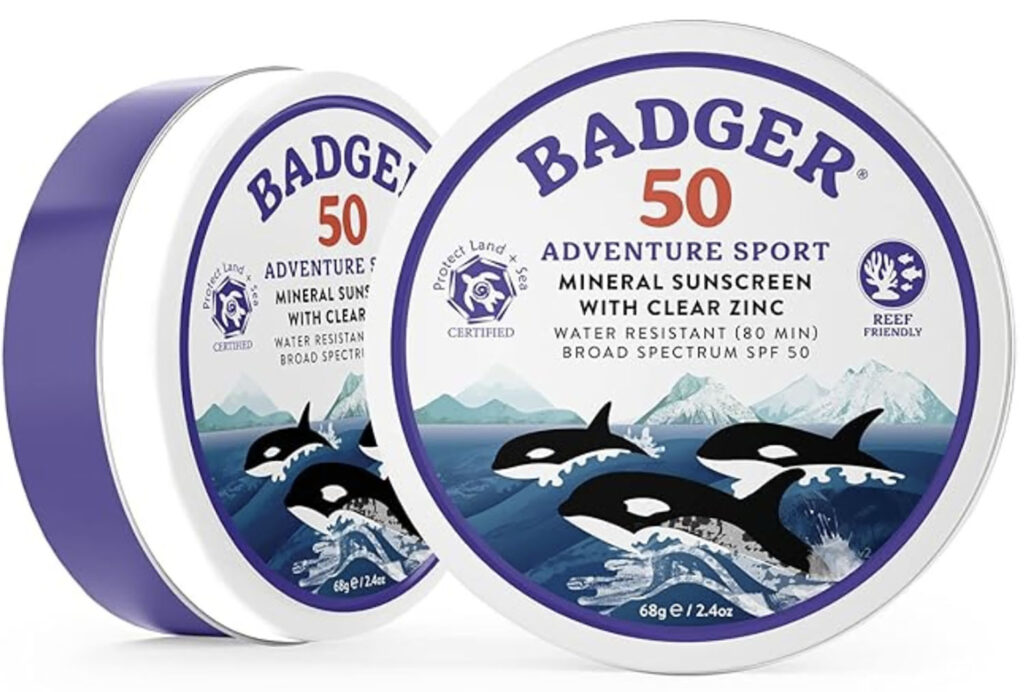
Badger Balm has sustainable sunscreen options that come in SPF 40 or SPF 50. Made with only 4 ingredients — zinc oxide, organic sunflower oil, organic beeswax and sunflower vitamin E — this sunscreen is clean, reef-safe, organic and cruelty-free. In fact, all of Badger’s products are food grade safe. It comes in recyclable tin packaging and is unscented for those with sensitive skin. Plus, they throw in a free lip butter with every order, also packaged in a tin!
Surf Durt – $13/oz
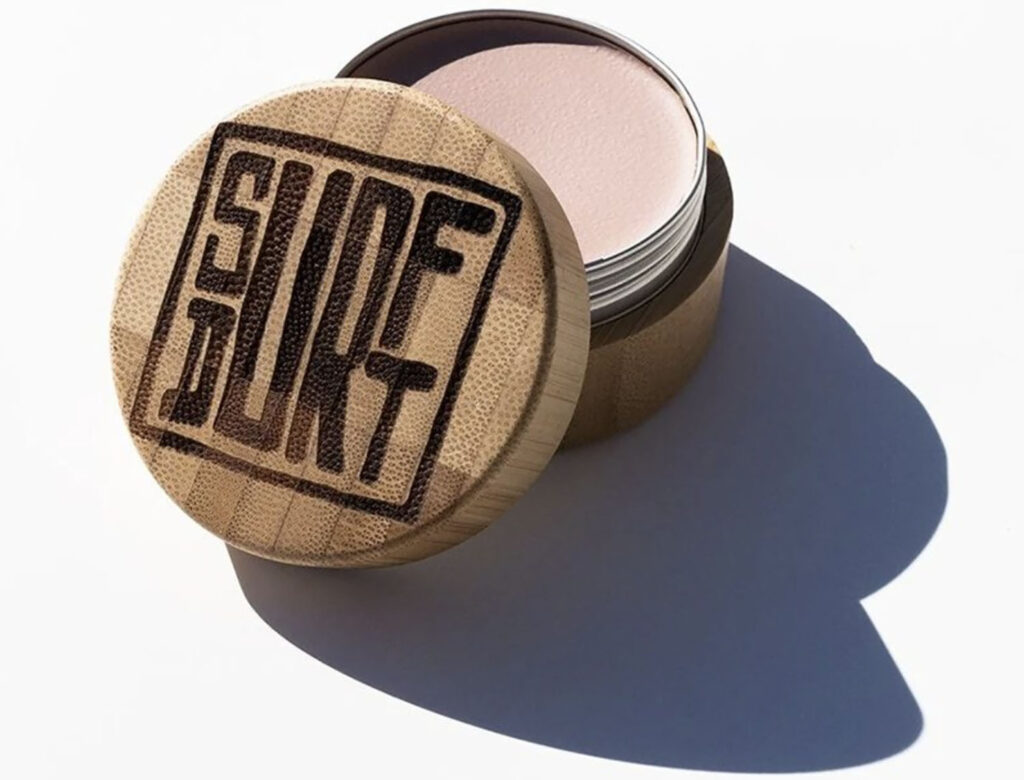
Surf Durt’s sunscreen is formulated using a specific form of zinc oxide, non-nano zinc oxide, that limits impact on coral reefs. It provides SPF 30 protection from UVA and UVB rays, and comes packaged in a reusable bamboo and aluminum container. This sunscreen is cruelty-free, and a portion of the proceeds from each product is donated to a specific non-profit organization doing environmental work, including Trees for the Future, Water for People, Surfers for Strays and Coral Gardeners. And for those concerned about it, this product is tinted a tan color and will not leave a white cast.
All Good – $10/oz
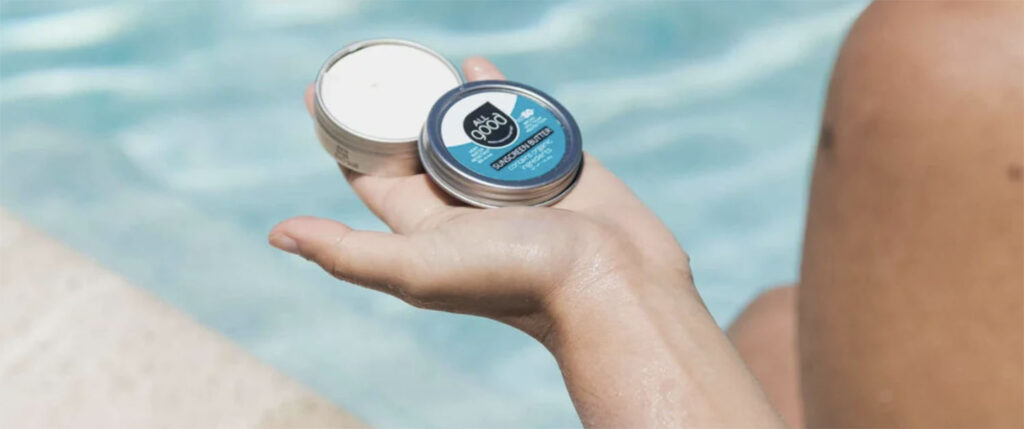
All Good is an SPF 50, non-nano zinc oxide sunscreen that protects from both kinds of UV rays, while also protecting the ocean. It comes in reusable tin packaging, and uses all cruelty-free and certified organic ingredients. They claim it is also super hydrating, due to its blend of coconut and jojoba oils. There’s a spray option for those seeking a lighter formula, and a tinted version to prevent white casts.
COOLA – $6.40/oz
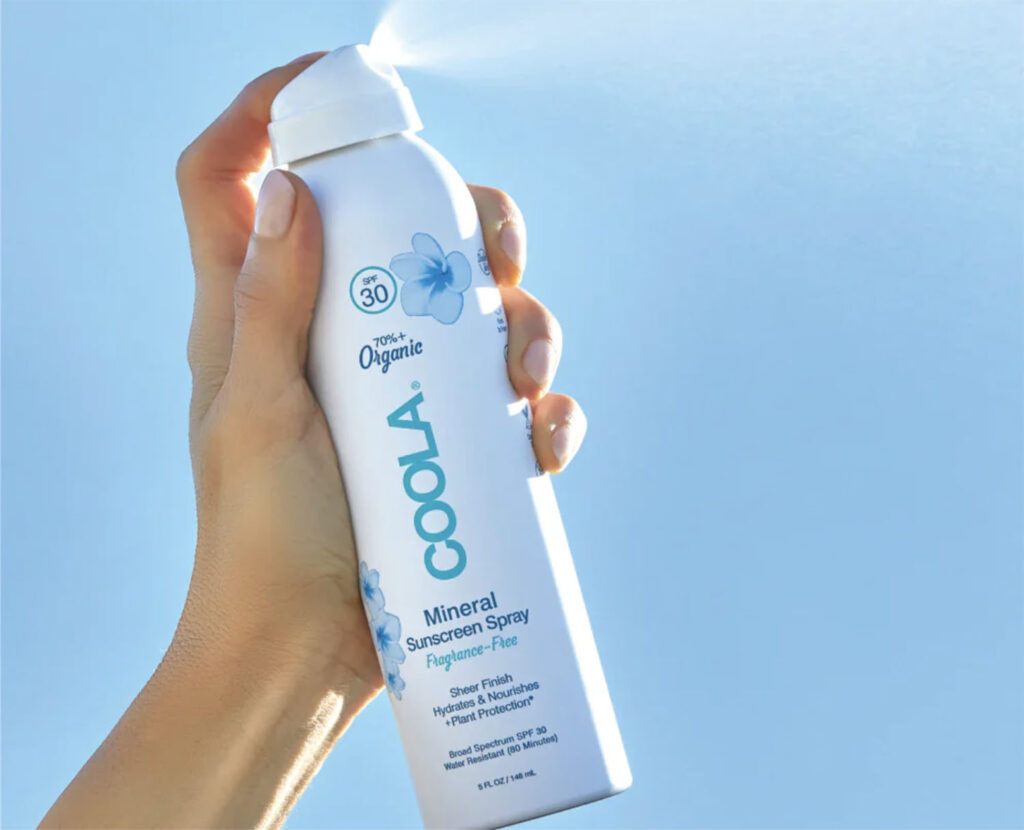
COOLA’s Mineral Sunscreen Spray provides SPF 30 protection from both UVA and UVB rays, and is formulated using non-nano zinc oxide for reef safety. All of COOLA’s products contain at least 70% organic ingredients, and this specific sunscreen comes in a recyclable, non-aerosol spray can (but does have a plastic cap). Because this is a spray formula, it is thin and does not leave a white cast. It is also free of fragrance for those with sensitive skin.
Butter Me Up Organics – $6/oz

Butter Me Up Organics is a clean brand whose motto is “don’t put anything on your body that you wouldn’t put in it.” Their organic sunscreen provides SPF 45+, formulated with reef-safe zinc oxide, hydrating shea butter, mango butter and coconut oil. It comes in a large, reusable glass jar, and is even shipped plastic-free.
Growing up in North Florida, I have lots of sun damage on my skin and am still learning how to protect myself not only from the sun, but from allowing toxic substances to enter my body. It makes no sense to protect your body from cancer-causing solar radiation using cancer-causing sunscreen. Now that I know more about eco-friendly sun protection, I am not going to spend another day out in the sun without my mineral sunscreen. I hope you won’t either!

